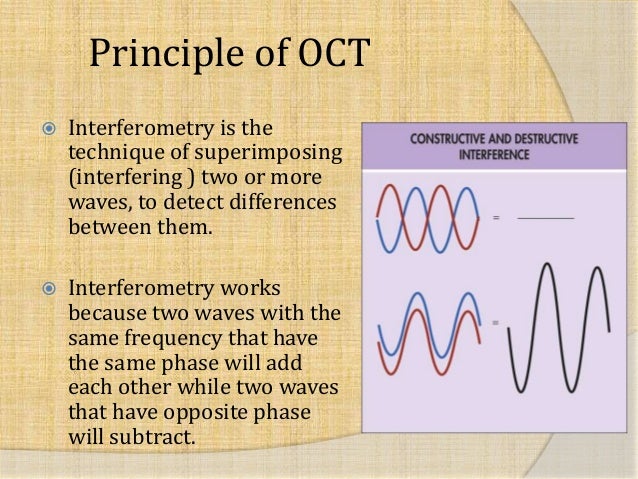
Through review of imaging protocols, data analysis methods and metrics, reporting of findings, and clinical practice of retinal OCTA, we identify and offer guidance on the standards needed, as well as identify areas requiring further investigation before standards can emerge. In this paper, we set out and make the case for the steps needed to standardize optical coherence tomography angiography (OCTA) imaging of the retinal microvasculature. Food and Drug Administration (FDA) and The European Medicines Agency, by subject-specific societies 6, and by research consortiums, including the Lifetime Initiative 8 and The European Institute for Biomedical Imaging Research 9. The broad need has been widely recognized by regulatory agencies, including the U.S. The availability of such databases is a critical step in the study and improvement of clinical management of specific diseases to reduce their burden and improve human health 7.
#Guide to optical coherence tomography interpretation software#
Such standards would facilitate open data and software sharing, and cross-comparison and pooling of data from different studies 3, 4, 5, 6, which, in turn, would facilitate the building of large, annotated image databases derived from healthy and diseased subjects. To fully capitalize on the potential of these promising tools to contribute to better human health, much more effort is needed in introducing and applying standards: in instrumentation, imaging protocols, data analysis methods, and reporting of findings. New advances in optics and photonics technologies will continue to shape the future of biomedical research and clinical applications 2. We hope that this paper will encourage the unification of imaging protocols in OCTA, promote transparency in the process of data collection, analysis, and reporting, and facilitate increasing the impact of OCTA on retinal healthcare delivery and life science investigations.īiomedical optics offers many promising tools for clinical medical imaging and diagnostics that are attractive because they are non-invasive, portable, and often low cost 1. Through review of the OCTA literature, we identify issues and inconsistencies and propose minimum standards for imaging protocols, data analysis methods, metrics, reporting of findings, and clinical practice and, where this is not possible, we identify areas that require further investigation. This paper addresses the steps needed to standardize OCTA imaging of the human retina to address these limitations.

These inabilities have impeded building the large databases of annotated OCTA images of healthy and diseased retinas that are necessary to study and define characteristics of specific conditions. Open data and software sharing, and cross-comparison and pooling of data from different studies are rare. Many lab-based and commercial clinical instruments, imaging protocols and data analysis methods and metrics, have been applied, often inconsistently, resulting in a confusing picture that represents a major barrier to progress in applying OCTA to reduce the burden of disease. With the introduction of optical coherence tomography angiography (OCTA), it has become possible to visualize the retinal microvasculature volumetrically and without a contrast agent. The visualization and assessment of retinal microvasculature are important in the study, diagnosis, monitoring, and guidance of treatment of ocular and systemic diseases.


 0 kommentar(er)
0 kommentar(er)
